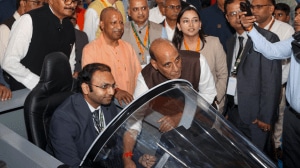The worm turns
The common earthworm is now the repository of hope for the reclamation of salt-affected soil, a problem that plagues large swathes of the co...

The common earthworm is now the repository of hope for the reclamation of salt-affected soil, a problem that plagues large swathes of the country. So long, such soil was treated with gypsum, which was expensive and only partially effective. But recently, after extensive experiments in the sodic soils of Uttar Pradesh, the Chennai-based Ecoscience Research Foundation (ERF) has found that vermitechnology could bring about remarkable changes in soil structure.
Scientists found that application of compost and earthworms helped upgrade nutrient levels high enough to sustain crops such as wheat, spinach, onion and potato. The Uttar Pradesh Bhumi Sudhar Nigam, which joined in the study, concluded that vermicomposting was the most cost-effective, everlasting solution to reclaim salt-affected fields.
Ironically, an expensive World Bank project is underway to reclaim sodic lands in UP, which has more than 1.2 million hectares of salt-affected farmland. The ERF technique, in contrast, requires only local species of earthworms and pre-processed biodung. The earthworms may be multiplied in pits, crates and concrete rings.
The ERF works on low cost, ecologically sound and farmer-friendly approaches for rural livelihood security. In fact, they have even shown that tannery waste can be effectively managed using compost and earthworms.





- 01
- 02
- 03
- 04
- 05


























